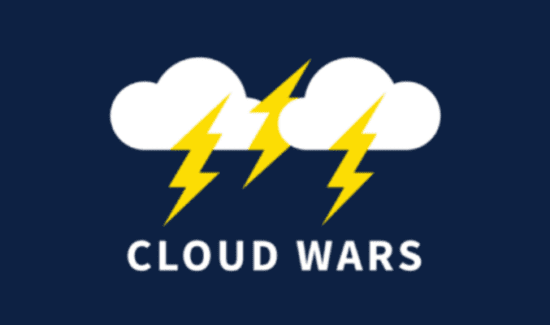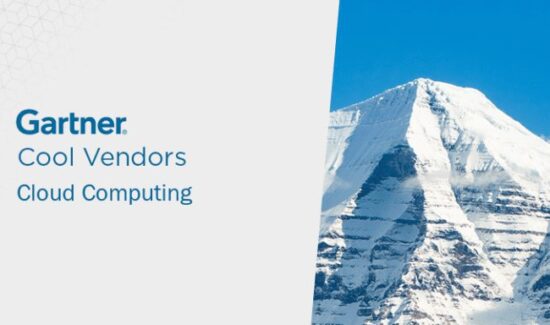The Best Cloud Security Courses for Cloud and Security Professionals


Solutions Review compiled the top cloud security courses for cloud and cybersecurity engineers and professionals of all skill levels.
Cloud security skills are in high demand among organizations that are looking to operate and maintain their organization’s cloud solutions. The pandemic and subsequent ‘new normal’ of remote work are furthering demands for these skills. Many are turning to online learning platforms to up their game and acquire the cloud security skills most likely to help them stand out. And whether you are looking to acquire those skills for work or for play, this collection of cloud security courses will help you learn the ropes so you can pilot some of the most widely used tools in no time!
With this in mind, the editors at Solutions Review have compiled this list of top-rated cloud security courses to consider taking. Click GO TO TRAINING to learn more and register.
Architecting for Security on AWS
“AWS security architects need to understand how to build security into every AWS deployment at every level. In this course, Architecting for Security on AWS, you’ll learn how to secure your data and your AWS services and resources at multiple levels using a defense-in-depth approach. First, you’ll learn how to protect your AWS credentials using identity and access management. Next, you’ll see how to capture and analyze logs using CloudTrail, CloudWatch, and Athena. Finally, you’ll learn how to implement network and instance security, encrypt data at rest and in-transit, and set up data backup, replication, and recovery. After finishing this course, you’ll be ready to granularly control access to your AWS resources.”
GO TO TRAINING
Azure Security Fundamentals
“Security is often a major concern as companies look to move to the cloud. Cloud platforms like Azure offer a number of security features above and beyond what traditional on-premises environments provide. Unfortunately, most available content on security in Azure focuses on specific components and features, while current training courses are too lightweight and are often quickly out-of-date since the Azure platform changes so much. This three-hour hands-on course gives you a fundamental understanding of managing security in Azure.”
GO TO TRAINING
Cloud Security: Introduction to Certified Cloud Security Professional (CCSP®)
“Many organizations may make the mistake of skipping architecture and going straight to design. This can be avoided by selecting a cloud service provider that fits with your business requirements. In this course, Cloud Security: Introduction to Certified Cloud Security Professional (CCSP), you will learn foundational knowledge of how to translate business requirements into selection criteria for a cloud service provider. First, you will learn how to identify which cloud architecture best meets your business requirements. Next, you will discover how to use security architecture to develop a secure cloud consumption strategy. Finally, you will explore how to select a cloud service provider and meet regulatory requirements. When you’re finished with this course, you will have the skills and knowledge needed to select and consume cloud services securely.”
GO TO TRAINING
Cybersecurity with Cloud Computing
“More and more companies are migrating their applications and infrastructure to the cloud, shifting operational aspects to service providers such as Microsoft and Amazon. However, cloud computing is a shared responsibility, especially when it comes to keeping your data, users, and systems safe. In this course, Malcolm Shore outlines the major forms of cloud technology, its benefits and risks, and the cybersecurity standards and body of knowledge required to mitigate those risks. He introduces concepts such as Software as a Service (SaaS), Platform as a Service (PaaS), and Infrastructure as a Service (IaaS) and the different deployment models available. He then reviews offerings from Microsoft Azure, Amazon Web Services, and Google Apps. Malcolm also shows the Security as a Service (SecaaS) capability of each platform, which can be used to identify unauthorized access and put cloud security defenses like encryption, logging, and monitoring into place.”
GO TO TRAINING
Ethical Hacking: Cloud Computing
“Cloud resource hardening and monitoring goes a long way in mitigating cloud-based attacks. In this course, which maps to the Cloud Computing module in version 10 of the Certified Ethical Hacker (CEH) exam, instructor Daniel Lachance explores how to evaluate and harden cloud-deployed resources. Daniel covers how cloud computing relates to the different phases of ethical hacking, as well as common threats that affect cloud computing environments. He also goes over cloud identity management, keeping your IT systems running in the cloud even in the event of an attack or security breach, using artificial intelligence (AI) and machine learning (ML) to identify anomalies that might indicate that your system is compromised, and more.”
GO TO TRAINING
Google Cloud Platform Fundamentals
“Over the last few years, the cloud has proven itself as a successful enabler for organizations of all sizes to improve agility, scale, reliability, and spend management. It has also made available capabilities that have greatly accelerated the adoption of a wide variety of new types of applications – from big data to Internet of Things. This rapidly expanding set of capabilities can be difficult for anyone to keep up with, and that challenge is further compounded when attempting to map capabilities across different public cloud providers. This course, Google Cloud Platform Fundamentals, provides you with an extensive overview of Google Cloud Platform. While the Google Cloud Platform is a more recent offering than some of its competitors, it draws on years of experience running Google’s massive internal infrastructure and exposes a streamlined set of solution-focused capabilities to help you build great systems.”
GO TO TRAINING
Introduction to AWS Cloud Security
“Every day, more applications adopt the AWS cloud causing an exponential demand for cloud security to protect and scale enterprises. In this course, Introduction To AWS Cloud Security, you will gain the ability to create a secure cloud environment within AWS. First, you will see an overview of foundational AWS service offerings and how they relate to the security of your infrastructure. Next, you will discover how to protect your cloud data and enable secure communication between cloud services. Finally, you will explore how to maintain a secure enterprise cloud environment with cutting-edge logging and monitoring solutions. When you are finished with this course, you will have the skills and knowledge of AWS needed to create a secure cloud environment.”
GO TO TRAINING
Learning Cloud Computing: Cloud Security
“Understand the basics of cloud security—a core component of cloud computing. Beginning with the basics, instructor David Linthicum explains the business case for cloud security and the levels and models available, including infrastructure-, application-, and data-level security; identity and risk management; encryption; and multifactor authentication. He then dives into the services offered by the top three cloud providers: Amazon, Microsoft, and Google. He reviews the compliance issues that affect specific industries, including health care and finance, and reviews the points you need to consider when identifying your security requirements and the security tools, services, and software to best meet those needs.”
GO TO TRAINING
Managing Microsoft Azure Security
“Configuring and monitoring the security of your Azure environment is a challenging endeavor. You want to ensure you are following best practices, finding important events, and taking a proactive stance on security configuration. Microsoft Azure Security Center helps provide a single management point for all things security in Azure. In this course, Managing Microsoft Azure Security, you will learn how to properly leverage the Azure Security Center from Microsoft to meet the advanced security needs of a cloud deployment. First, you will explore how to configure policies and data collection for the resources in your Azure subscriptions. Next, you will learn how to review the recommended actions from Security Center and prioritize which actions to take first. Finally, you will understand how to use the advanced cloud defense features to take your security game to the next level. By the end of this course, you will be able to leverage Azure Security Center to improve your security posture in Azure and assess and remediate vulnerabilities effectively.”
GO TO TRAINING
Solutions Review participates in affiliate programs. We may make a small commission from products purchased through this resource.
Looking for a managed service provider for your cloud solutions? Our MSP Buyer’s Guide contains profiles on the top managed cloud service providers for AWS, Azure, and Google Cloud, as well as questions you should ask vendors and yourself before buying. We also offer an MSP Vendor Map that outlines those vendors in a Venn diagram to make it easy for you to select potential providers.
Check us out on Twitter for the latest in Enterprise Cloud news and developments!























